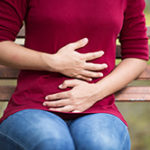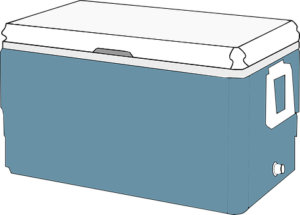The following was written by Dr. Jasmine Marcelin and originally posted to the Physician’s Weekly Blog on July 3, 2018 in honor of the upcoming Independence Day holiday.
****
Fourth of July. Independence Day. For most, a delightful holiday filled with fun, family, friends and most importantly, FOOD.
 Independence Day is the most popular day to grill. Whether the plan for July 4th is grilling, picnics or checking out a hot dog eating contest, if you will be gathering around food, there’s a chance that food-borne illnesses will gather with you. You may not realize immediately that you have been exposed to a potential foodborne illness until days after your picnic. Here’s a list of potential offenders and how to keep them safe:
Independence Day is the most popular day to grill. Whether the plan for July 4th is grilling, picnics or checking out a hot dog eating contest, if you will be gathering around food, there’s a chance that food-borne illnesses will gather with you. You may not realize immediately that you have been exposed to a potential foodborne illness until days after your picnic. Here’s a list of potential offenders and how to keep them safe:
Potato/Egg Salad: Salmonella – causes vomiting, diarrhea, fever, cramps within 12-72hrs
 Hot Dogs/Deli meat: Staphylococcus aureus – causes nausea, vomiting, diarrhea, cramps within 30 minutes-6 hours
Hot Dogs/Deli meat: Staphylococcus aureus – causes nausea, vomiting, diarrhea, cramps within 30 minutes-6 hours
Chicken: Campylobacter spp – causes bloody diarrhea/fever and stomach cramping within 2-5 days (Also Salmonella, as above for potato/egg salad)
Beef: Clostridium perfringens – causes acute diarrhea/stomach cramps within 6-24hrs
 Burgers: Escherichia coli – causes diarrhea, stomach cramps, vomiting within 3-4 days
Burgers: Escherichia coli – causes diarrhea, stomach cramps, vomiting within 3-4 days
Shellfish: Vibrio – causes nausea, vomiting, watery diarrhea, fever within 1-4 days
Fresh Fruit/Vegetables: Cyclospora spp – causes watery diarrhea/cramps within a week
Cheeses: Listeria – causes fever, flu-like illness in pregnant women (can hurt the growing fetus too), and meningitis in elderly or immunocompromised persons
So how do you keep your 4th of July focused on fireworks instead of flatulence? The CDC encourages using the steps “Clean, Separate, Cook and Chill” to ensure proper food safety.  Step 1 – Clean: Wash your hands, utensils and food handling surfaces often
Step 1 – Clean: Wash your hands, utensils and food handling surfaces often
Step 2 – Separate: Don’t cross-contaminate. Keep raw meat separate from other cooked or uncooked foods, separate your meats (i.e. keep your chicken separate from your pork and beef), and use separate cutting boards for each item
Step 3 – Cook: Always cook your food to the right internal temperature, and use a food thermometer. Consuming raw or partially uncooked meats increases your risk of foodborne illnesses. The CDC suggests these temperature recommendations for different types of foods:
• 145°F for whole cuts of beef, pork, veal, and lamb (then allow the meat to rest for 3 minutes before carving or eating)
• 160°F for ground meats, such as beef and pork
• 165°F for all poultry, including ground chicken and turkey
• 165°F for leftovers and casseroles
• 145°F for fresh ham (raw)
• 145°F for fin fish or cook until flesh is opaque
 Step 4 – Chill: Refrigerate your food promptly, and at most within 2 hours (within 1 hour if outside temperature is above 90°F). After cooking, put the food back in the cool refrigerator and make sure it can keep temperatures below 40°F. Food left at room temperature for long periods invites bacteria to multiply rapidly, increasing likelihood of foodborne illnesses.
Step 4 – Chill: Refrigerate your food promptly, and at most within 2 hours (within 1 hour if outside temperature is above 90°F). After cooking, put the food back in the cool refrigerator and make sure it can keep temperatures below 40°F. Food left at room temperature for long periods invites bacteria to multiply rapidly, increasing likelihood of foodborne illnesses.
Remember, summer heat and humidity makes it difficult to keep food cold outdoors. If leaving your home to celebrate the Fourth, invest in a proper cooler and load it with ice to keep your meats cold before cooking. Use a separate cooler for drinks. Remember to fill up your grill gas tank or stack up on charcoal to ensure that food is grilled to the “Kill bacteria and keep them dead” temperature.
 Most importantly, WASH YOUR HANDS before and after handling raw meat, before handling non-meat items, and before you sit down to enjoy the fruit of your grilling prowess. (Or at least use hand sanitizer!)
Most importantly, WASH YOUR HANDS before and after handling raw meat, before handling non-meat items, and before you sit down to enjoy the fruit of your grilling prowess. (Or at least use hand sanitizer!)
Check out these CDC websites for more food safety tips and information about symptoms and sources of foodborne illnesses.
